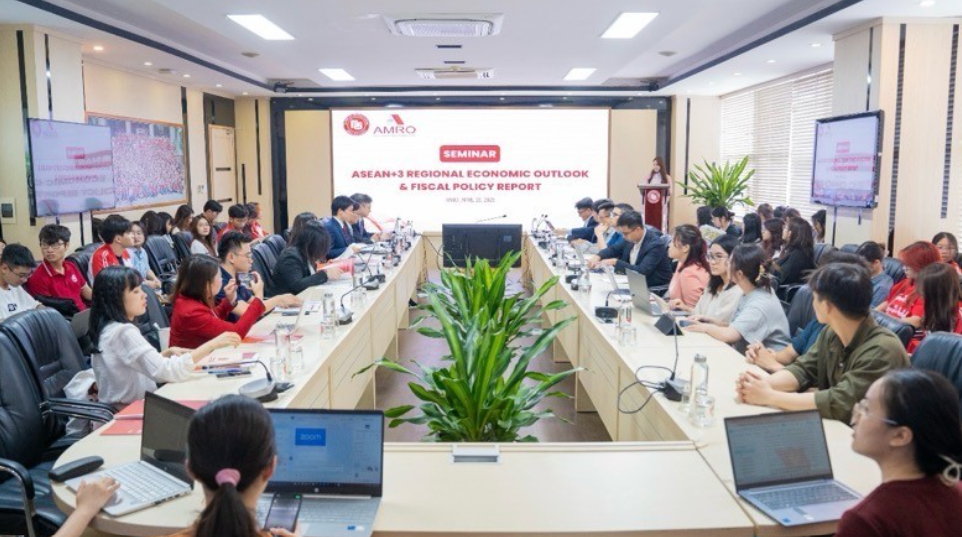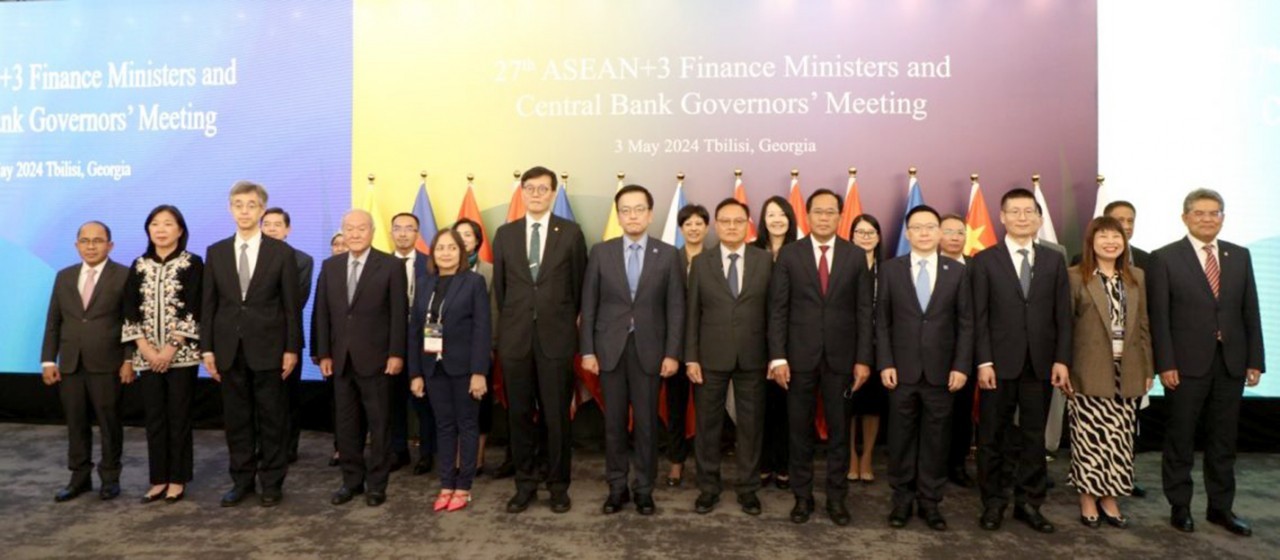 |
| An overview of the seminar. |
The event marked the first launch of the ASEAN+3 Regional Economic Outlook 2025 Report within the ASEAN region.
The seminar gathered representatives from the ASEAN+3 network of financial research institutions, policymakers, scholars, business leaders, and a large number of lecturers and students.
In his opening remarks, Assoc Prof Dr Dao Ngoc Tien, Vice President of Foreign Trade University, emphasised that the ASEAN+3 region continues to maintain stable growth amid global uncertainties.
However, to sustain this momentum, member countries must adopt appropriate strategies and strengthen cooperation to overcome common challenges.
At the seminar, speakers form the ASEAN+3 Macroeconomic Research Office (AMRO) presented findings from the ASEAN+3 Regional Economic Outlook 2025 and the ASEAN+3 Fiscal Policy 2025 reports.
The delegates shared the view that the unprecedented rise in global tariffs poses significant challenges to ASEAN+3 economies. Nonetheless, the region remains resilient thanks to strong domestic demand, diverse trade partnerships, and flexible policy space.
Amid growing global instability, experts highlighted the need to enhance regional cooperation, ensure agile financial governance, and commit to medium-term policy planning. They also recommended rebuilding fiscal buffers and strengthening macroeconomic stability. Moreover, policies should go beyond fiscal measures to restructure economies and promote sustainable growth without overburdening public finances.
Speaking at the event, Assoc Prof Dr Vu Hoang Nam, Head of the Scientific Research Management Department at the Foreign Trade University, identified key factors driving sustainable growth for Vietnam in the medium and long term. He noted that in the face of global trends such as aging populations, climate change, and geoeconomic fragmentation, productivity-based growth is essential.
He outlined four critical factors: maintaining macroeconomic stability; strategic breakthroughs in infrastructure (particularly digital), human capital, and institutional reform; leveraging new resources such as data and improving productivity through innovation and technology; and restructuring towards a digital economy.
He also stressed the importance of regional cooperation to mitigate the impact of geoeconomic fragmentation on technology transfer in the ASEAN+3 region./.
| ASEAN+3 is a cooperation mechanism between ASEAN and the three Northeast Asian countries including Japan, the Republic of Korea, and China. |




















































